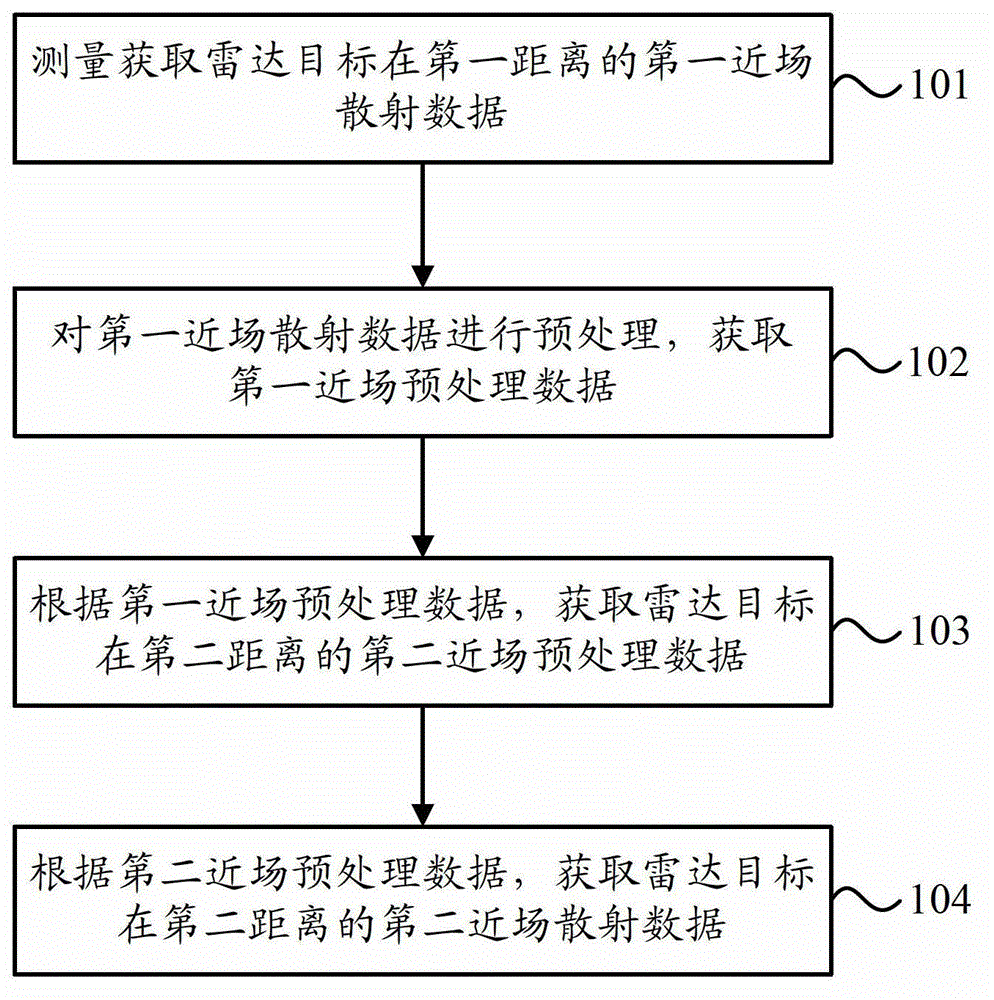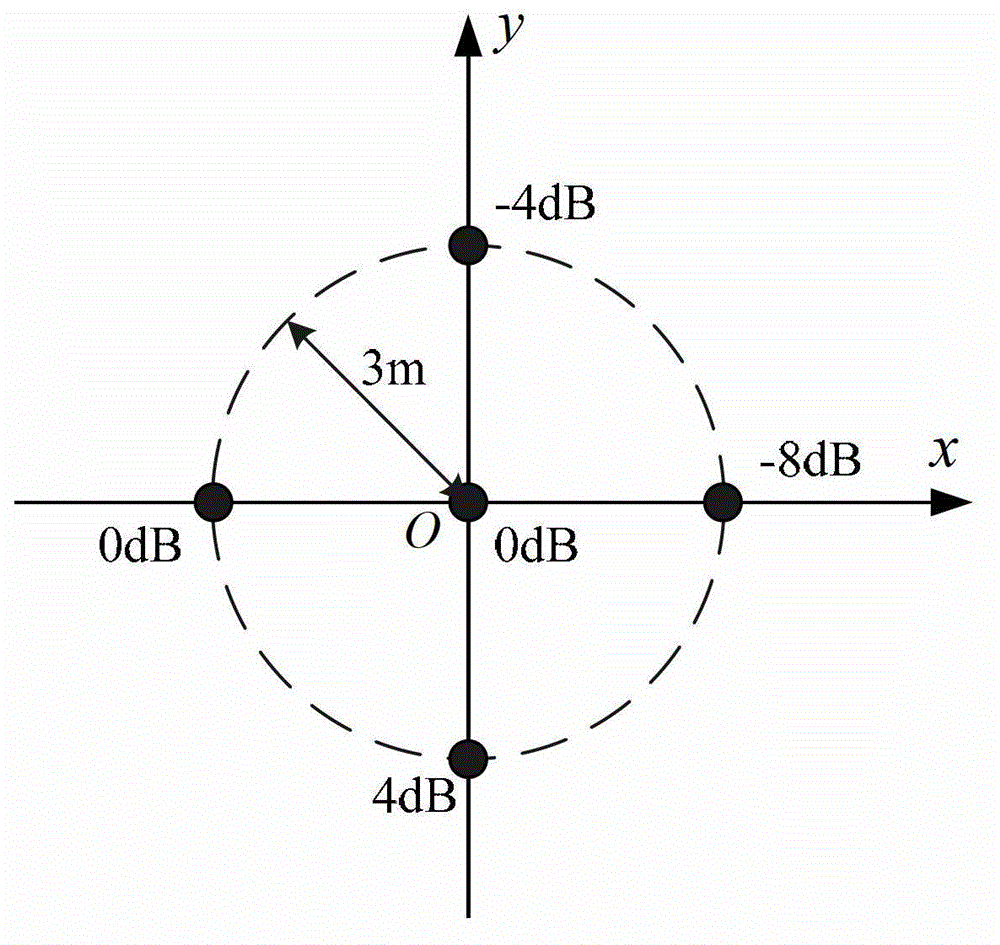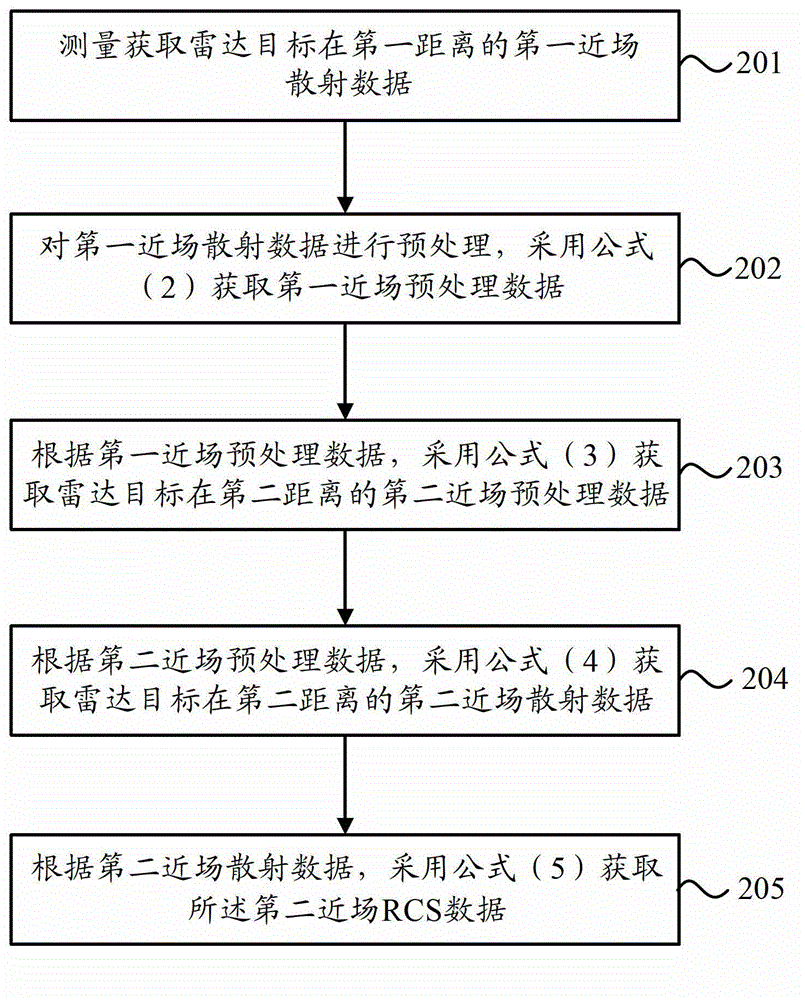Near field-to-near field transformation method of radar scattering cross section
A radar cross section and near-field technology, applied in radio wave measurement systems, instruments, etc., to solve problems such as inability to derive
- Summary
- Abstract
- Description
- Claims
- Application Information
AI Technical Summary
Problems solved by technology
Method used
Image
Examples
Embodiment Construction
[0028] figure 1 It is a flow chart of Embodiment 1 of the conversion method from the near field to the near field of the radar scattering cross section of the present invention, as figure 1 As shown, the transformation method from the RCS near field to the near field in this embodiment may include:
[0029] Step 101, measure and acquire first near-field scattering data of a radar target at a first distance.
[0030] In this embodiment, the radar target to be tested satisfies the far-field condition in the pitch direction, namely where R 0 is the distance between the radar and the center of the target to be measured, λ is the radar wavelength, h is the length of the target to be measured in the pitch direction; and satisfies the scalar synthetic aperture radar (Synthetic Aperture Radar, referred to as: SAR) scattering distribution model, for example , the radar target to be tested consists of five ideal point scattering centers, and their distribution and scattering intensi...
PUM
 Login to View More
Login to View More Abstract
Description
Claims
Application Information
 Login to View More
Login to View More - R&D
- Intellectual Property
- Life Sciences
- Materials
- Tech Scout
- Unparalleled Data Quality
- Higher Quality Content
- 60% Fewer Hallucinations
Browse by: Latest US Patents, China's latest patents, Technical Efficacy Thesaurus, Application Domain, Technology Topic, Popular Technical Reports.
© 2025 PatSnap. All rights reserved.Legal|Privacy policy|Modern Slavery Act Transparency Statement|Sitemap|About US| Contact US: help@patsnap.com



